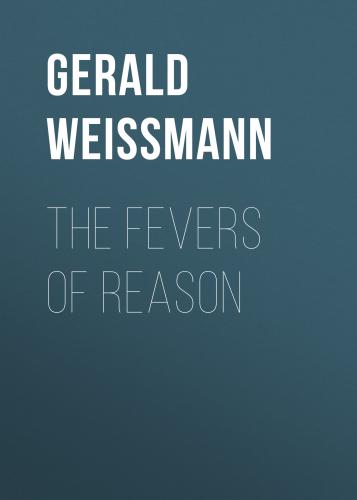The Fevers of Reason. Gerald Weissmann
and 8-year-old son to a tattoo shop this past summer for their first-ever temporary tattoos. Young Ethan got a cross on his arm. His sister, Olivia, got a dolphin on her belly. A day later, Olivia complained of severe pain. “It looked like she was branded with a poker,” Lolk said.
Skin branding of this sort (bonfires kindled on their skin, as Dr. Holmes might say) is due to acute contact dermatitis induced by henna’s active agent, lawsone (2-hydroxy-1,4-naphthoquinone) and an added ingredient, PPD (para-phenylenediamine). Henna is a shrub (Lawsonia inermis, or Egyptian privet) cultivated in India, Sri Lanka, and much of North Africa. The dried leaves are mixed with various solvents and applied directly to the skin or hair. PPD is often added to red henna powder to produce the “black henna” preferred for tattoos. But PPD also renders the mixture more allergenic and sometimes virulently toxic: see the 1996 Lancet paper “A Woman Who Collapsed after Painting Her Soles.” Temporary henna tattoos—the sort applied at rock concerts and kiddie festivals—are intended to persist for only a few weeks, but the incidence of acute inflammation, permanent scarring, and keloid formation has become epidemic in the last decade and a half. PubMed lists only three reports of reactions to henna tattoo in the two decades between 1975 and 1995—but 259 papers since 1995! A number of these cases were caused by henna without added PPD. Hair dyes come in all sorts of proprietary formulations: a 2006 study from Korea reported that of 15 henna samples tested, PPD was present in 3, nickel in 11, and cobalt in 4.
Henna has been recognized as an occupational hazard in hairdressing salons. At various doses the dye induces hemolytic anemia in lab animals and humans alike, and oral intake of henna produces an acute inflammation of the colon. In cell culture assays, lawsone causes cell death and cell cycle arrest. As might be expected for a redox-dependent naphthoquinine, individuals who lack oxidant defenses on a heritable basis, such as those with G-6 PD deficiency, are particularly at risk for Heinz-body hemolytic anemia.
In response to injuries caused by “temporary tattoos,” the FDA last year issued a warning against the import of henna preparations containing PPD, but stated that the agency was powerless to supervise ingredients in “cosmetic samples and products used exclusively by professionals—for example, for application at a salon, or a booth at a fair or boardwalk.”
So much for the kiddie trade!
WHILE THE YOUNG ARE APT TO APPLY HENNA directly to the skin, folks of a certain age mainly use henna to color their hair. The practice has been common for centuries in every corner of the world. Recently, however, France seems to have swept the honors for turning henna into art, as any stroller through Paris can attest. When the weather turns balmy, the streets are alive in a blaze of henna, offering coiffures in orange, auburn, red, and crimson.
But there may be a real downside to this display of vegetal finery. Over the years, I’ve observed on Parisian boulevards, in theaters, concert halls, cafés, and flea markets, a peculiar pattern of baldness in the French henna crowd. Women with hennaed hair, if of a certain age, seem almost uniformly to suffer from drastic, central alopecia—hair loss—quite evident at the back of the scalp, and quite noticeable in areas where the hair is parted. As a rheumatologist, I was struck by the difference between what one might call “hennapecia” and the commonly observed hair loss in patients with systemic lupus erythematosus. Nor is the pattern of hennapecia like that of ordinary female aging with its “increased thinning over the frontal/parietal scalp, greater density over the occipital scalp, retention of the frontal hairline, and the presence of miniaturized hairs.”
Alas, the phenomenon is not limited to France. Although hennaed hair is less common in the United States, the same pattern seems to rear its ugly head, so to speak. In the fall of 2015, at the Pier Antiques Show in New York, where henna is also much in evidence, I observed forty-two women (approximate ages over 45) with hair overtly dyed with henna. Twenty-nine had clear signs of hennapecia. As a control, I observed thirty-six “blonde” women, blondness presumably due to peroxide, of the same age: only five had similar areas of hair loss. In both groups, the incidence of exposed, undyed roots was pretty much the same.
Ever since Lewis Thomas and I consistently produced hair loss in rabbits given excess doses of vitamin A, I have been intrigued by alopecia induced in lab animals and humans by agents of similar chemical structure. These instances have been associated with redox-induced changes in the hair growth cycle. Lawsone and PPD are clearly involved in redox cycling, and there are good reasons to believe that oxidative stress is involved both in graying and hair loss. This sequence was described by Arck and colleagues in the FASEB Journal
Конец ознакомительного фрагмента.
Текст предоставлен ООО «ЛитРес».
Прочитайте эту книгу целиком, купив полную легальную версию на ЛитРес.
Безопасно оплатить книгу можно банковской картой Visa, MasterCard, Maestro, со счета мобильного телефона, с платежного терминала, в салоне МТС или Связной, через PayPal, WebMoney, Яндекс.Деньги, QIWI Кошелек, бонусными картами или другим удобным Вам способом.
